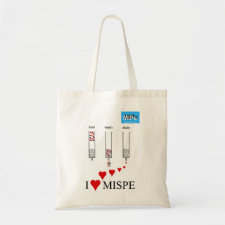
Authors: Boonjob W, Yu YL, Miró M, Segundo MA, Wang JH, Cerdà V
Article Title: Online Hyphenation of Multimodal Microsolid Phase Extraction Involving Renewable Molecularly Imprinted and Reversed-Phase Sorbents to Liquid Chromatography for Automatic Multiresidue Assays.
Publication date: 2010
Journal: Analytical Chemistry
Volume: 82
Issue: (7)
Page numbers: 3052-3060.
DOI: 10.1021/ac100185s
Abstract: Molecular imprinted polymers (MIP) have recently drawn much attention as highly selective solid-phase materials for handling and isolation of organic pollutants in complex matrices. Because of the impaired retention capacity for target species as compared with reversed-phase materials and irreversible sorption of interfering compounds by nonspecific interactions, the implementation of MIP-based solid-phase reactors as permanent components in automatic flow-systems has not received widespread acceptance as of yet. To tackle this limitation, a dynamic microscale solid phase extraction (μSPE) method capitalizing on the principle of programmable flow and bead injection analysis is herein proposed as a front end to liquid chromatography for multiresidue assays. It involves in-line renewable tandem-SPE microcolumns composed of molecularly imprinted polymers and copolymeric N-vinylpyrrolidone/divinylbenzene beads integrated within the flow network for multimodal extraction. Chlorotriazine herbicides (namely, atrazine, simazine, propazine) and principal degradation products thereof (namely, deisopropylatrazine and deethylatrazine) were selected as model analytes. The effect of several parameters, including the dimensions and chemical composition of the sorptive microcolumns, the sample loading flow rate, the type and volume of eluent, the interface with liquid chromatography (LC), and the disposable nature of the column on the analytical performance were investigated in detail. The assembled flow setup features appropriate removal of interfering organic species via solvent switch with toluene, the circumvention of analyte band-broadening in LC by in-line merging of the eluate with a water stream, and the transfer of the overall analyte-containing eluate into the LC. For 10-mL sample percolation, limits of detection (S/N = 3) of 0.02 - 0.04 ng mL-1, limits of quantification (S/N = 10) of 0.07 - 0.12 ng mL-1, absolute recovery percentages >79%, precision within 1.4 - 5.5%, and enrichment factors of 46 - 49 were obtained for the suite of assayed herbicides. The multimodal μSPE method with renewable beads was applied to the multiresidue determination of the target herbicides in crude soil extracts and untreated environmental waters at concentration levels below those endorsed by the current EU Water Framework Directives following appropriate sample preconcentration and/or cleanup
Template and target information: chlorotriazine herbicides, atrazine, simazine, propazine, deisopropylatrazine, deethylatrazine



Join the Society for Molecular Imprinting

New items RSS feed
Sign-up for e-mail updates:
Choose between receiving an occasional newsletter or more frequent e-mail alerts.
Click here to go to the sign-up page.
Is your name elemental or peptidic? Enter your name and find out by clicking either of the buttons below!
Other products you may like:
 MIPdatabase
MIPdatabase









